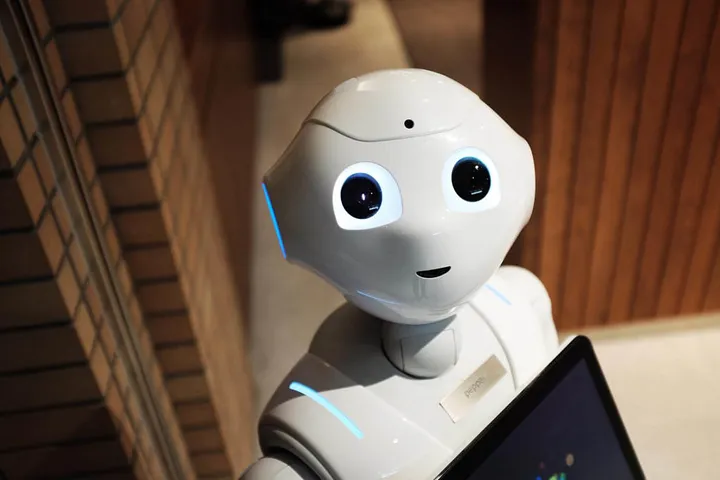In today’s world, the conversation has become a popular form of communication. A lot of people prefer having a conversation with one another. We are using instant messaging apps like WhatsApp, Facebook messenger, WeChat more than social media.
When the internet grew, we could search for all the possible information online through Google, Wikipedia, and various sources. Now you do not have to search for yourself. There is an assistant for you who can do it. All you have to do is simply ask.
“Hey Siri, tell me latest news”
“Alexa, where is my order”
“Okay Google, call my wife”
These Chatbots use Natural Language processing popularly known as NLP for understand human communication. Through this, they can understand and replicate the exact human behavior.
E.g. If we type “Hello” to a Chatbot, it understands it as “Hey” “Hi” “Good morning” “Hello” Etc as a greeting, as a conversation starter.
It’s upon us how we are programming it. NLP is getting quite good at understanding the context of commands per se. Human & Computer interactions are going through enormous evolution. It is expected that in a few years, Chatbots will empower the majority of online interactions.
Wouldn’t it be great if your business is available on these messaging apps 24 x 7 x 365 online?
Now it’s possible through personalized digital assistant known as Chatbots. A Chatbot is an automated interaction machine through instant messaging replicating human-like conversations. A Chatbot is created by providing automated responses to users through instant messaging to the most anticipated frequently asked or questions by defining a set of rules/logic to them.
Gone are the days where you put your customers on hold on IVR lines, email tickets because of limited resources, you can use Chatbots and solve their queries almost immediately.
Because of this businesses are developing Chatbots so that they can have a conversation with you as if they are human. You may even think that you are having a conversation with a human when in reality it’s a Chatbot.
More and more businesses are using them for online customer service, to resolve issues & answer simple queries. A few of them are deployed as personal shopping assistance giving recommendations of the particular product. Those recommendations can be based on your product preferences you have browsed previously, or cross-selling from a particular category.
Chatbots are fast, easily accessible, and simple to use. They are programmed to work independently without any human intervention. It can answer questions in the natural language just like a real person would. When a query is raised in a chatbot, it will answer based upon the scripts and logic provided and also what it knows from the database, if he doesn’t know the response it can be programmed to pass the query to a human operator. Chatbots could also include Artificial Intelligence where they learn from all the unanswered queries and gradually gain the relevance and scope for future such queries. The complexity and the algorithm of a Chatbot are dependent upon how it is programmed, its underlying tech stack, and the databases it can access.
A chatbot has become an additional media channel for businesses to connect with their customers and serve them. Businesses can choose to improve and scale customer experiences in the most personalized way by adding value to their existing conversation.
Chatbots can be used for all sorts of applications.
All you need to do is define your use case very well. Design a complete customer journey in that use case and jot down frequently asked questions at every level. Create simple mind maps for queries and their responses. You must also give it a personality to make it more humane. E.g. Lupin’s Bot Anya, HDFC’s EVA, etc.
Indeed, the majority of customer service requests are always for similar data points. Is it opening a new account, checking order status, customer feedback, business location on maps, or digging up in Knowledge base / FAQs? It is wise to configure automated responses to a similar type of question. It will not only save your resources but also serve your customers instantly.
A single chatbot can attend Lakhs or conversations at a given point in time. You are creating an automated army to serve your prospects & when your prospect finds a solution to their query instantly, it will leave them awestruck. You are personalizing a conversation with users as per their requirements, giving him ultimate experience and scaling the relation. This is called personalization at Scale. There is zero waiting time for your visitor’s query to be resolved. There is no need for unnecessary operating costs to support staff salaries. Your Bot can manage most of it!
Chatbots are not necessarily always transactional. You can design them to build interaction with users such as playing a quiz, telling jokes, sharing the latest information, Etc. It depends on your end engagement objective.
Let’s look at it as per business functionality specific use cases:
Telecom
Travel & Hospitality
There are many tools available online which can help you creating user journey. Everything starts with a trigger, goes with configuring acknowledgment, and replies while creating logic behind it.
Remember, before defining the use case of chatbot you must understand the desired output. You are having a conversation directly with your users, anytime, anywhere. You are anticipating their intent and keeping your solutions ready to be delivered. Overall you are strengthening your relationship and building loyalty. Keep building ways to connect with your User!
Everything you can automate can be a business case, For every business case you need a carefully crafted user flow!
